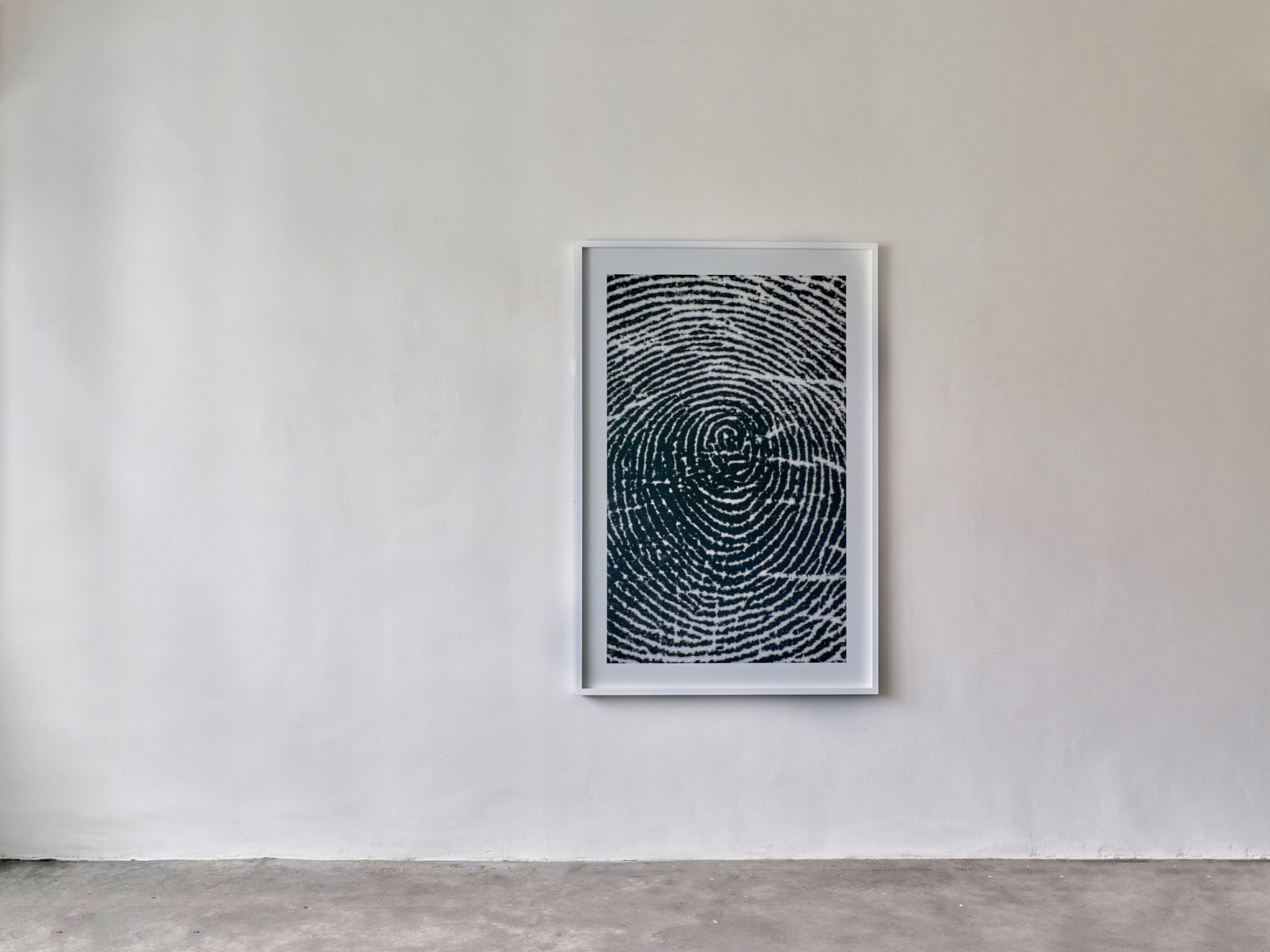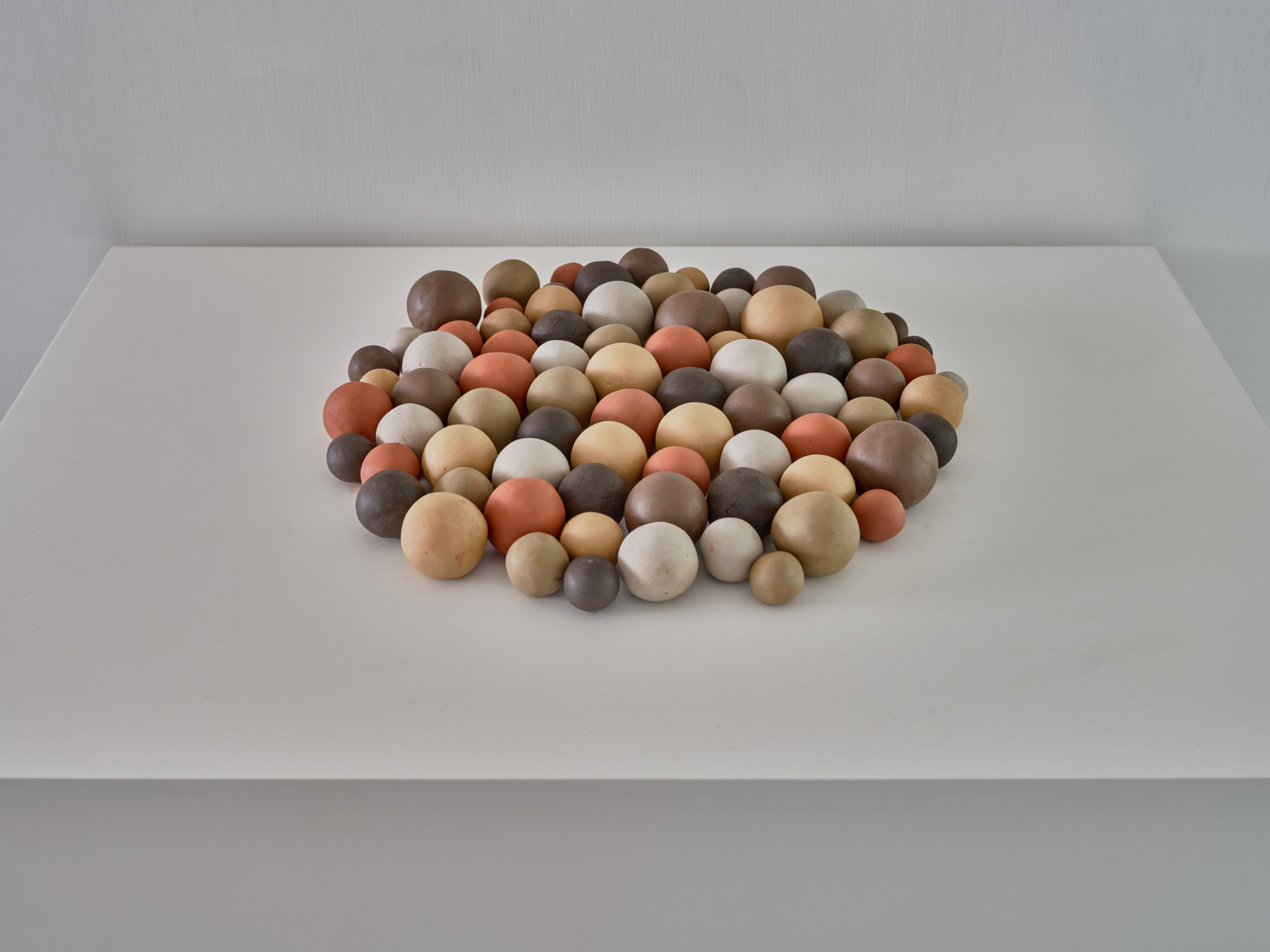
South Korean artist Kimsooja’s exhibition in Hong Kong invites viewers to pause and reflect
- Artist’s ‘contemplative’ Hong Kong show explores our relationships with our bodies through rice paper ‘paintings’, clay works, video art and an installation
- Seeing the latter, which calls to mind giant tablecloths on a clothesline, viewers ‘automatically become part of the work’, one observer says
For a series of performances titled A Needle Woman, 1999–2001, South Korean artist Kimsooja stood motionless in the streets of busy metropolises such as Mexico City and New Delhi while masses of people pushed past her.
Despite her surroundings, she achieved a sense of stillness and inner calm.
Her current exhibition in Hong Kong, “Topography of Body”, at Axel Vervoordt Gallery in Wong Chuk Hang until June 3, can be described in the same way. It’s a meditative show that invites viewers to pause and reflect.
“During Art Basel, a lot of artists show off with visually spectacular works,” says Yongwoo Lee, assistant professor in cultural studies at the Chinese University of Hong Kong. “But this is a very humble, contemplative show which is refreshing.”

The Seoul-based artist is also known for her fabric bundle sculptures inspired by the Korean practice of bottaris – wrapping personal belongings inside bed covers to take on a journey.
The sculptures bring to mind migrant crises, when war and danger force people to flee carrying only essential items.
Kimsooja has also wrapped entire buildings, such as Madrid’s Crystal Palace, and interiors including the Korean national pavilion at the 2013 Venice Biennale, in translucent diffraction grating film – creating immersive bottaris suffused with light.
After a long career experimenting with various mediums, this exhibition shows a quieter side, the artist describing the show as a return to her roots as a painter and an exploration of our relationships with our bodies.
She has paired new rice paper “paintings”, prints and clay work with an earlier video work and large-scale fabric installation.
What Chinese artists think of art censorship examined in Hong Kong show
The show opens with a 2022 work, Meta-Painting, which consists of a stack of 250 sheets of handmade hanji, Korean rice paper, which took about a year to dry and form a thick, blank slab.
The artist sees this as a textile of sorts, as the paper – specially made in a studio in the South Korean city of Mungyeong – has fibres woven together in a criss-cross pattern akin to woven material.
The work invites viewers to reflect on the invisible labour of papermaking and the bodily gestures involved in creating the work. Kimsooja says the work stemmed from a “non-doing and non-making” approach, which essentially requires minimal intervention on her part.
“Art making involves a certain kind of violence, which I’ve always had trouble with,” she says. “So I am not making the work … Everything is already there, I just recontextualised it.”

This philosophy was inspired by an encounter in 1985 with avant-garde US composer John Cage’s work at the Biennale de Paris.
She recalls being eager to hear Cage’s music but instead heard nothing but silence. Then she discovered a statement: “Whether you try to make it or not, the sound is heard.” It had a profound effect on her.
“Since then, I started looking at nature and art from that perspective,” she says.
In a 2023 work, Geometry of Mind, she rolled a series of smooth clay balls and placed them on a plinth interspersed with rough fragments of clay which she pulled forcefully from a larger block of clay.
The way that she works with clay and the concept she shares with us is extraordinary
“When you grab the clay there is an action that needs your aggression,” says Kimsooja. “I wanted to juxtapose that state of mind with the opposite – caressing the clay, taking care and making it precious in a way when rolling it into a ball.”
This work stemmed from a previous participatory project, Archive of Mind, shown at various institutions including Sydney’s Art Gallery of New South Wales, in which Kimsooja invited visitors to roll their own balls in a meditative manner.
“The way that she works with clay and the concept she shares with us is extraordinary,” says Maud Page, the museum’s deputy director and director of collections.

“In a time when everything is bustling, it’s a beautiful way to have [time for] contemplation and to make sure that we stop.”
At the heart of the show is 2012 work Thread Route – Chapter III, a video which Kimsooja describes as a visual poem. The third in a series exploring textile traditions across the globe, it shows master weavers, block printers and embroiderers at work in rural Gujarat, India.
We hear repeated thumping sounds of a wood block pressing into fabric and the chinking of bangles as a woman with tattooed fingers sews carefully. The sounds reverberate throughout the gallery, vividly bringing their craft to life.
When the audience steps inside this room, it’s as if they automatically become part of the work
The video is interspersed with scenes of ancient sites including step wells and the surrounding landscape.
“The work is a lot about our relationship with the body because block painting uses [your full body] and creates a certain kind of topography … at the end of the film when you see people walking [on salt flats] it’s another way of the body sewing onto the fabric of nature,” Kimsooja muses.
The exhibition culminates in an installation dating from 2012 to 2015, Thread Route – Chapter III: Meta Painting, made of large tablecloths hung like laundry on a clothesline.

The worn pieces of cloth have disjointed indigo and reddish-pink patterns as they lay underneath the actual fabric upon which the craftsmen were printing.
“It creates a certain kind of unintended tableau,” says Kimsooja, who sees the work as a residue of accumulated labour left on the surface of the fabric.
“When the audience steps inside this room, it’s as if they automatically become part of the work,” says Lee of the experience of walking amid the billowing cloths.
“This is no longer just an art space, it’s an accumulation of the people’s interpretations and ideas.”
“Topography of Body”, Axel Vervoordt Gallery, Wong Chuk Hang. Ends June 3

